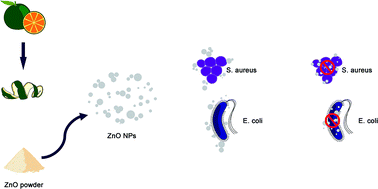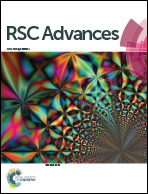Green synthesis of ZnO nanoparticles using orange fruit peel extract for antibacterial activities
Abstract
This paper presents an efficient, environmentally friendly, and simple approach for the green synthesis of ZnO nanoparticles (ZnO NPs) using orange fruit peel extract. This approach aims to both minimize the use of toxic chemicals in nanoparticle fabrication and enhance the antibacterial activity and biomedical applications of ZnO nanoparticles. In this work, an aqueous extract of orange peel was used as the biological reduction agent for the synthesis of ZnO NPs from zinc acetate dihydrate. It was found that the size and morphology of the ZnO NPs significantly depended on physicochemical parameters such as the annealing temperature and pH during NP synthesis. The ZnO NPs exhibited strong antibacterial activity toward Escherichia coli (E. coli) and Staphylococcus aureus (S. aureus) without UV illumination at an NP concentration of 0.025 mg mL−1 after 8 h of incubation. In particular, the bactericidal activity towards S. aureus varied extensively with the synthesis parameters. This study presents an efficient green synthesis route for ZnO NPs with a wide range of potential applications, especially in the biomedical field.

- This article is part of the themed collection: Synthesis of nanomaterials


 Please wait while we load your content...
Please wait while we load your content...